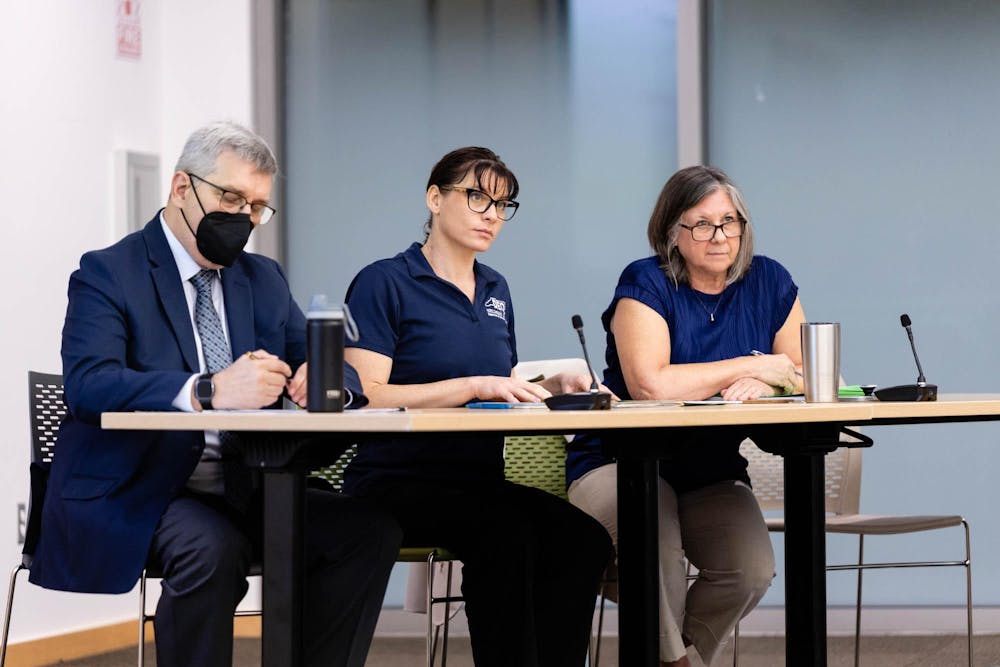The Department of Environmental Quality held a public meeting on Wednesday to discuss the draft Brownfields Agreement for the redevelopment of the Town of Chapel Hill Police Property located at 828 Martin Luther King, Jr. Blvd. The meeting included a summary of the proposed plan to cap coal ash at the site along with public comment from community members.
-
Brownfields Agreements are promises between DEQ and developers not to sue depending on the developer making the land suitable for reuse. This proposed plan seeks to cap coal ash at the site by draining surface water from the area and placing material on top to keep the ash in place.
- According to the Agreement, environmental contamination exists on the Brownfields Property in groundwater, soil, exterior soil gas and surface water, and in structural fill containing coal combustion products (CCP).
- The site was initially created in the 1950s and was filled with CCP and a mix of construction debris.
- Sharon Eckard, the supervisor for the Eastern District NC Brownfields Program, said the property was purchased by the Town in the early 80s where the police station was then constructed.
- “This means that this material has been here for a long time,” Eckard said. “It's been here for at least 50 to 60 years.”
- The Brownfields Property application was filed in 2019 and a Health and Ecological Risk Assessment was performed in 2021.
- Frannie Nilsen, an environmental toxicologist, said this process identifies the pathways of exposure and the risk associated with those pathways.
- “Risk is a combination of the dose of a chemical or contaminant combined with the exposure experience,” she said.
- Findings from their assessments include high levels of arsenic, mercury and metals found within the soil and CCP.
- Public comments from community members were also heard by DEQ during the meeting.
- The Brownfields process requires at least a 30-day public comment period, which was begun by the Town in July.
-
Nick Torrey, a senior attorney at the Southern Environmental Law Center, said the proposed agreement would allow public green spaces and even a playground on top of the coal ash, putting only a layer of dirt between children and toxic pollutants.
- “We know that dirt covers don't work,” Torrey said. “They have failed over and over again, including coal ash disasters in Mooresville and Charlotte and in fact, this Chapel Hill itself is an example of a dirt cover that has failed over the years to contain the ash.”
-
Community member Diane Roberts said DEQ’s presentation was something no layperson could understand.
- “No one could look at that [presentation] and understand where the silk fence was, where Mill Creek was, how wash would come down,” she said.
- Roberts said she has lived in the Town for around 30 years and the issue has continuously come up.
- Several years ago, Roberts was on a committee for the NAACP and the issue was brought up by a town council member because they wanted to bring it to the Brownfields. Roberts said they wanted to have residential developments on the property, a prospect that is now not permitted under the current proposed agreement.
- “Shame on the Town of Chapel Hill for putting this forward as something that is ethically and ambiguous and will benefit the community,” Roberts said.
What’s next?
-
Currently, the Town has not selected a final remedy for this issue.
- DEQ said they have provided a framework for what would be required if CCP material remains onsite as a part of this final remedy. This would include site stabilization and eliminating completed exposure pathways.




